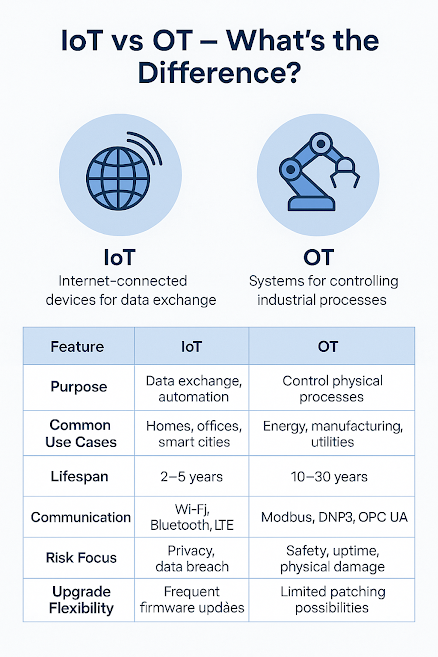IoT vs OT—What’s the Difference and Why It Matters for Security
IoT (Internet of Things) and OT (Operational Technology) both involve connected devices — but they serve very different purposes. Understanding the difference is critical for designing effective security strategies.
What is IoT?
IoT refers to consumer and enterprise smart devices connected via the internet. These devices gather, send, or receive data—often wirelessly.
Examples:
-
Smart thermostats
-
Wearable health trackers
-
Smart home security cameras
-
Industrial IoT sensors in manufacturing
Goals: Efficiency, convenience, automation, remote control.
What is OT?
OT refers to hardware and software systems that control physical processes in critical infrastructure or industrial environments.
Examples:
-
SCADA systems
-
PLCs (Programmable Logic Controllers)
-
Industrial robots
-
Power grid control units
Goals: Safety, reliability, uptime, real-time control.
Why This Matters for Security
-
IoT devices often face mass-scaling threats (botnets, privacy breaches).
-
OT systems are targeted by specialized, high-impact attacks (like Stuxnet or Triton).
-
Security tools and approaches must be tailored:
-
IoT needs cloud integration, patch management.
-
OT requires air-gapping, real-time monitoring, and physical safeguards.
-
Bottom Line
IoT and OT may both connect devices — but they operate in very different worlds. If you treat them the same, your security strategy will fall short.
Know the difference. Secure accordingly.



Comments
Post a Comment